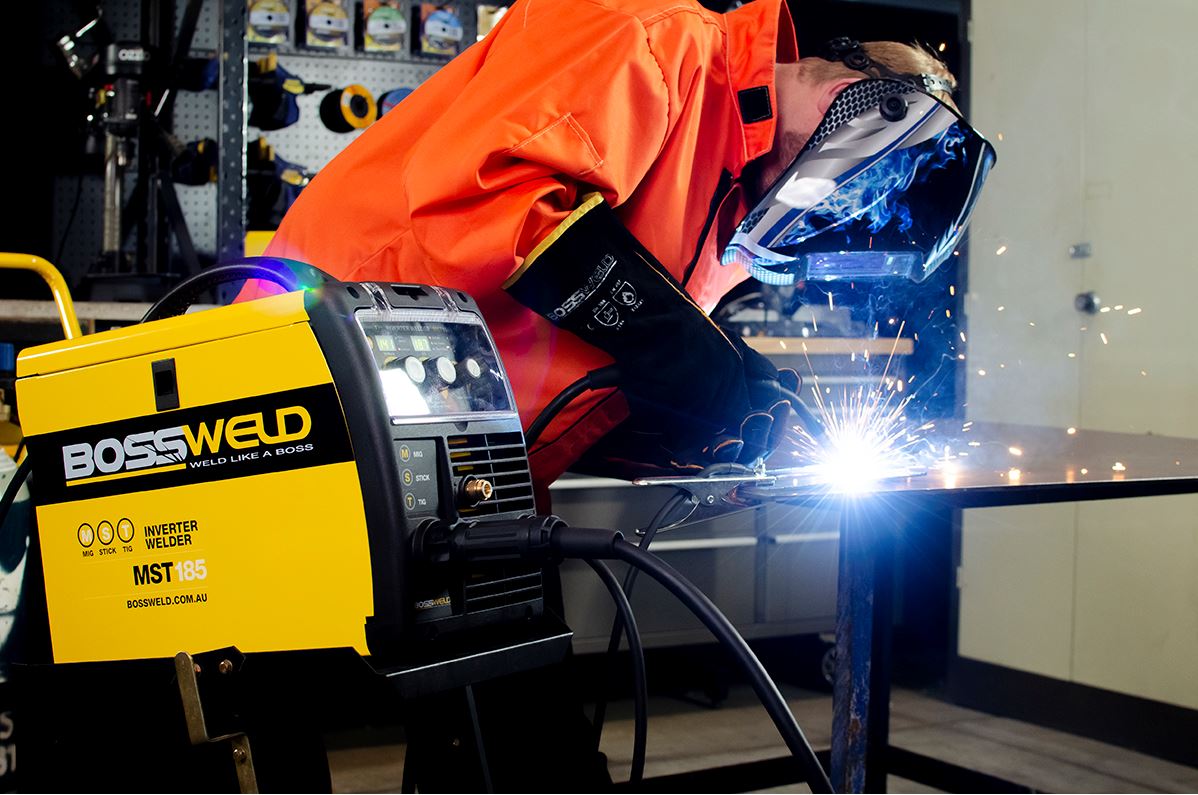Welding is more than just a skill; it’s an art form that allows you to transform raw materials into something incredible. Whether you’re a seasoned professional or a weekend warrior, having the right welding machine can make all the difference in your projects. But with so many options available, how do you ensure you’re getting the most out of your equipment? This guide will walk you through everything from understanding different types of welding machines to maintenance tips and project ideas that can unleash your creativity. Get ready to power up your welding game!
The Importance of a High-Quality Welding Machine
A high-quality welding machine is the backbone of any successful welding project. It ensures that you achieve strong, durable welds every time. When you’re working with various materials, a reliable machine can adapt to your needs and deliver consistent results.
Investing in a quality welding machine saves both time and money in the long run. Cheaper models may seem appealing at first but often lead to frustration due to frequent breakdowns or poor performance. This can result in wasted materials and extended project timelines.
Additionally, advanced features found in high-quality machines enhance your overall experience. From better heat control to improved arc stability, these elements contribute significantly to weld quality and ease of use.
Choosing a top-notch welding machine allows you to focus on what truly matters—bringing your creative visions to life without compromising on quality or safety.
Understanding the Different Types of Welding Machines
Welding machines come in various types, each designed for specific tasks. Understanding these differences is crucial for achieving optimal results.
MIG (Metal Inert Gas) welders are popular for their ease of use. They provide a smooth, continuous wire feed and work well on thin materials. This makes them ideal for beginners or quick projects.
TIG (Tungsten Inert Gas) welders offer precision. They allow you to control the heat input more accurately, making them suitable for stainless steel and aluminum work.
Stick welding machines are versatile and can be used outdoors or in windy conditions. They’re great for thicker materials but require more skill to master.
Plasma cutters serve a different purpose altogether by allowing you to cut through metal with high-speed ionized gas. Each type has its strengths and knowing which one suits your project will enhance your welding experience significantly.
Tips for Choosing the Right Welding Machine for Your Needs
Choosing the right welding machine can be overwhelming, but a few key factors can simplify your decision. First, consider the type of projects you plan to tackle. Different machines excel in specific applications like MIG, TIG, or stick welding.
Next, evaluate the power requirements. A machine suited for home use may differ from one designed for industrial tasks. Take note of voltage and amperage ratings that match your needs.
Portability is another important aspect. If you’ll be moving between job sites or working on different projects at home, a lightweight model will serve you better than a bulky unit.
Budget plays a crucial role too. While investing in quality is essential, find options that offer good value without breaking the bank. Research reviews and ask experienced welders for recommendations to ensure you’re making an informed choice tailored to your unique demands.
Proper Maintenance and Care for Your Welding Machine
Proper maintenance is crucial for ensuring the longevity of your welding machine. Start by keeping it clean. Dust and debris can accumulate, affecting performance.
Regularly inspect cables and connections. Look for wear or damage that could lead to safety issues or faults during operation.
Cooling systems need attention too. Make sure vents are clear and fans are functioning properly to prevent overheating.
Check the gas supply if using a MIG welder. Ensure it’s at an adequate level before starting any project.
Don’t forget about replacing worn-out components like tips and nozzles regularly. They play a key role in achieving quality welds.
Consider scheduling professional servicing annually to catch any potential problems early on. This proactive approach saves time and money down the line while enhancing your welding experience.
Safety Precautions When Using a Welding Machine
Welding safety is paramount. Start by wearing the right protective gear. This includes a welding helmet with proper shading, gloves, and flame-resistant clothing.
Ensure your workspace is clean and organized. Remove any flammable materials that could ignite during the process. A clutter-free area reduces risks significantly.
It’s also essential to work in well-ventilated spaces. Fumes produced while welding can be harmful if inhaled over time. Utilize fans or open windows to keep air circulating.
Always check your equipment before starting a project. Look for loose connections, damaged cables, or leaks in gas lines. A little maintenance goes a long way in preventing accidents.
Never rush through tasks when using a welding machine. Taking your time ensures you focus on each step safely and effectively.
Project Ideas and Techniques to Try with Your Welding Machine
Unleash your creativity with your welding machine by exploring diverse project ideas. Start with simple items like decorative metal art or garden sculptures. These projects not only enhance your space but also allow you to experiment with various techniques.
For the more adventurous, try crafting custom furniture pieces. A welded steel table can serve as a stunning centerpiece for any room while showcasing your skills. Don’t forget about outdoor structures; a sturdy fire pit is both functional and aesthetic.
Another fun idea is creating personalized tools or brackets tailored to your needs. This practical approach combines utility with craftsmanship, making it especially rewarding.
Consider collaborating on community art installations that invite others to appreciate welding’s beauty. Each project offers unique challenges and learning experiences, pushing you further in your welding journey while building confidence in using the machine effectively.
Troubleshooting Common Issues with Your Welding Machine
Welding machines can sometimes throw unexpected challenges your way. Identifying the issue quickly saves time and prevents further damage.
One common problem is inconsistent arc stability. This could stem from improper settings or contaminated electrodes. Check your machine’s voltage and adjust accordingly.
If you notice excessive spatter, it might be due to incorrect wire feed speed or a wrong gas mixture. Experimenting with these variables can lead to cleaner welds.
Overheating is another concern, often caused by prolonged use without breaks. Ensure proper ventilation during operation and take regular intervals to cool down the machine.
If your welder won’t start at all, inspect for power supply issues first. Always check the connections before assuming there’s a more significant malfunction at play.
Keep a troubleshooting guide handy for reference as you work through these obstacles effectively!
Conclusion
When it comes to getting the most out of your welding machine, understanding its capabilities and limitations is key. A high-quality welding machine can open up a world of possibilities for both beginners and seasoned welders. By choosing the right type suited to your projects, you set yourself up for success.
Regular maintenance ensures that your machine operates smoothly and lasts longer. Implementing safety precautions protects not just you but also those around you during welding tasks. Exploring various project ideas can enhance your skills while keeping things interesting.
Should any issues arise, knowing how to troubleshoot common problems will save you time and frustration. With practice and proper care, you’ll develop a strong partnership with your welding machine that allows creativity to flourish in every project you undertake. Happy welding!





